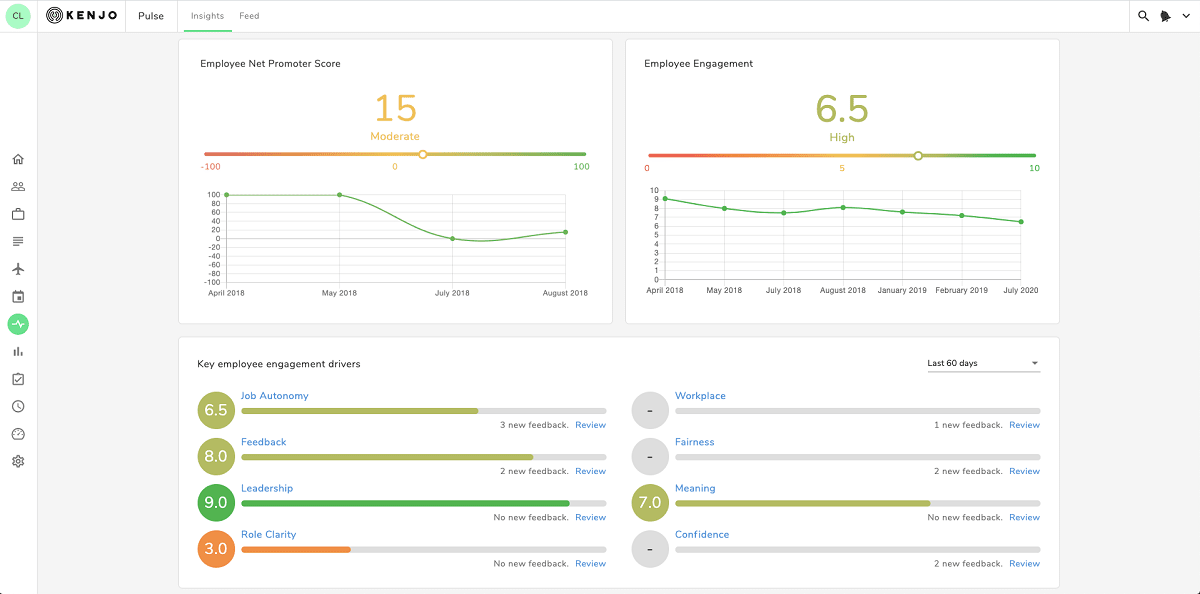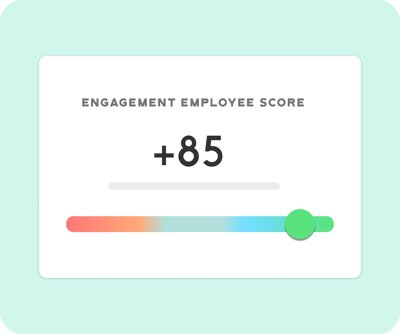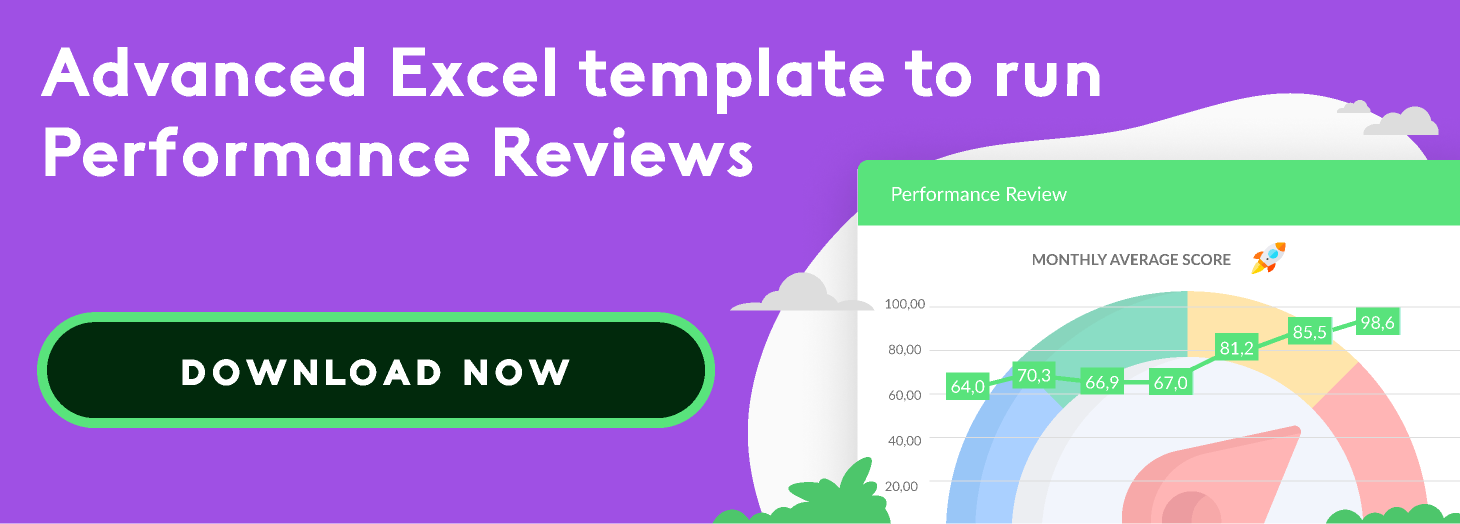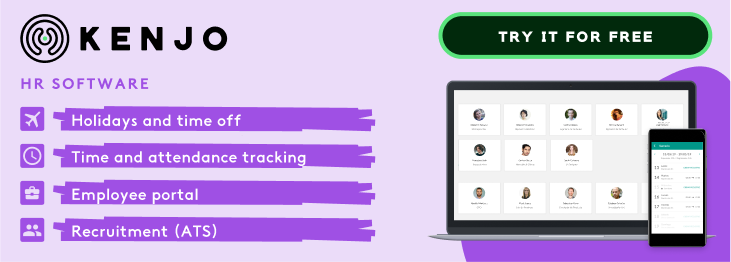What is eNPS, and why is it important?

eNPS is probably one of the most interesting metrics for the people department. It's a fast and straightforward way of measuring employee loyalty which helps you introduce improvements that directly impact business results.
What is eNPS?
eNPS, or Employee Net Promoter Score is a metric that companies use to measure employee loyalty. You can discover this by asking your workforce one simple question: "On a scale of zero to ten, how likely are you to recommend this organisation as a place to work to a friend?"
You can categorise your workforce into groups, depending on their answers:
- Promoters: employees who have given the company a nine or 10, and who are therefore motivated and satisfied.
- Passives: those who gave a score of seven or eight, which means they are satisfied but wouldn't recommend the company.
- Detractors: all those giving a score below six are dissatisfied and could even discredit the company.
You can then obtain an overall figure from all of these results, which makes it easy for you to track and measure trends over time.
Difference between eNPS and NPS
ENPS comes from NPS, or Net Promoter Score, a metric that brands use to gauge customer loyalty. Fred Reichheld published this method during the early 90s in the Harvard Business Review. This article explains his theory, that this was the best and most efficient method for measuring client satisfaction, by asking one single question. Many companies started to use it and found it extremely valuable.
So, if this system works for gauging customer loyalty, why wouldn't work for measuring the loyalty of your employee? And that's how the Employee Net Promoter Score came about. Even so, it's worth noting that there are certain differences between one and the other.
Firstly, the question we ask is different:
NPS: how likely are you to recommend [name of brand or product] to a friend or family member?
eNPS: How likely are you to recommend this organisation to a friend as a good place to work?
Secondly, and most importantly, the NPS shows the name, surname and contact information of the respondent, while the eNPS is always anonymous. This is to protect respondents’ identities, but it does result in lower traceability. It becomes more difficult for the company to calculate the return on corrective actions it takes.
Finally, it's also worth highlighting that the implementation of NPS is much higher than that of eNPS. Most workplace surveys include all sorts of questions which are usually more qualitative than quantitative in nature.
Why measure eNPS data?
Engaged employees are good for the company. They are more productive, enhance the working environment and provide a better customer experience. For this reason, it's important to know whether they are satisfied. To find out more, please read our article on how to evaluate remote employees.
Companies tend to create long-winded questionnaires to take up a great deal of time, and which also make it harder to draw conclusions. Nevertheless, the eNPS gives us a sound basis for understanding employee engagement and loyalty more simply and efficiently. It also enables us to track progress over time.
Benefits of eNPS
While it's still relatively unknown, eNPS brings huge benefits and information to the company.
It can be measured quickly
The main benefit of Employee Net Promoter Scores is that they can be calculated easily and quickly. HR managers don't have to spend hours designing questionnaires and then again on analysing responses. You only need to ask one question to discover how the company’s employees are feeling.
It has a high participation rate
We've all been there: staring at long boring questionnaires and eventually giving up. Nobody wants to feel like they're wasting their time.
So, the more questions we ask, the more unlikely people will want to participate. Nevertheless, the eNPS is so short and simple that practically no-one refuses to answer, and participation rates are excellent.
It's an easy metric to work with
The eNPS boils down to one number, so it’s a very easy metric to work with. The human resources department can see how their eNPS is progressing over time and track any changes that arise as they launch different initiatives. Apart from that, using one single variable leaves little margin for error or confusion.
Almost everyone knows what an NPS is
A Net Promoter Score (NPS) is so popular that most people would easily understand the eNPS with a short explanation (even those who have never heard of either of them).
It's a highly cost-effective method
This methodology is so simple that the cost (time and money) of implementing it and gathering information is extremely low. It only takes a simple email and a couple of reminders to measure the eNPS. Besides, you'll find specific HR software that helps you to automate the process, which requires even less effort.
How do you calculate the Employee Net Promoter Score?
Calculating your eNPS score is so straightforward. Just follow the steps below:
- Count the total number of responses.
- Calculate the percentage of people that gave nine or ten (promoters).
- Calculate the percentage of people that gave between zero and six (detractors).
 Kenjo Interface
Kenjo Interface
And then, lastly, subtract the percentage of detractors from the percentage of promoters. For example:
eNPS = % Promotors - % Detractors.
Let’s look at an example:
The company has 100 employees, and the results below were obtained from those who responded to the question:
- 40 detractors.
- 30 passives.
- 30 promotors.
eNPS: 30% - 40% = -10
As the NPS result is represented by a number and not a percentage, we can remove this symbol. In this example, say that employee loyalty in this company is -10.
And as the eNPS score is a number and not a percentage, you can simply remove the percentage symbol and conclude that it has an eNPS of -10.
The most convenient way of calculating a company’s eNPS is to use software that automates questionnaire distribution, gathers the information and automatically calculates the final result. Kenjo employee survey software helps you to measure employee loyalty effortlessly, as well as do a thorough follow-up of how this metric develops.
How can I find out if my company has a good eNPS?
As we saw in the example, eNPS scores can be negative. This means there are more detractors than promoters in the company. In this scenario, it’s vital to take a closer look at employees’ comments to spot potential issues and proactively try to improve them. The eNPS can also be positive, which is an excellent sign. If you get a good result, make sure you analyse what it is you’re doing well, and use it to attract and retain talent.
What is considered a good eNPS? In general, you could say:
- Any value under -10 is a cause for concern.
- A score between +10 and +20 is normal.
- Any result above 40 or 50 is good news.
4 tips for improving your eNPS
Want to improve your eNPS? Increase the number of promoters in your workforce with these tips:
1. Share the eNPS results obtained
If the result wasn't quite what you expected, you might be hesitant to share it with your employees. But look at this as the first step towards improvement and encourage workers to get involved in the process.
2. Avoid creating new detractors
Naturally, the HR department will work hard to convert detractors into passives, or possibly, into promoters. Even so, your strategy should focus on preventing those passive employees from becoming detractors.
You can achieve this by understanding why detractors gave a low score and try to ensure that these conditions don’t repeat themselves, or spread throughout the company.
3. Collaborate with employees
The eNPS only represents employee satisfaction at that specific moment; nevertheless, it doesn’t reflect the reason behind this score. It’s essential to look closer to discover the reason for this by asking your employees for feedback. And you can even segment by role or department, and implement specific actions targeted to a group of employees for better results.
4. Create an action plan
Launch initiatives that will help you continually improve your eNPS. For example, organise working groups within the company to get further information and ideas for initiatives. Focus groups are another interesting option with leaders from each area, or department can share ideas or opinions.
Free eNPS
You'll find a range of software on the internet that offers simple and free solutions for calculating your eNPS. Most of them require you to input your responses manually and then they'll automatically calculate your final eNPS result.
Some of these include:
- NPS Calculator: a pretty straightforward tool for calculating the final eNPS result. You only have to input how many people gave a specific score, from one to ten, and that’s it. You’ll also get a chart that gives you a visual representation of your results.
- Hotjar NPS Calculator: works in the same way as the above but offers a cleaner and more straightforward interface. Is extremely user-friendly and totally free.
- Promoter Ninja: this tool enables you to send NPS surveys to employees or clients. The first 500 are free.
Kenjo, on the other hand, makes the entire process much easier, as we've already mentioned. From sending the questionnaire, gathering the data and calculating the final result. All on a single integrated platform, together with the rest of your HR tools.



